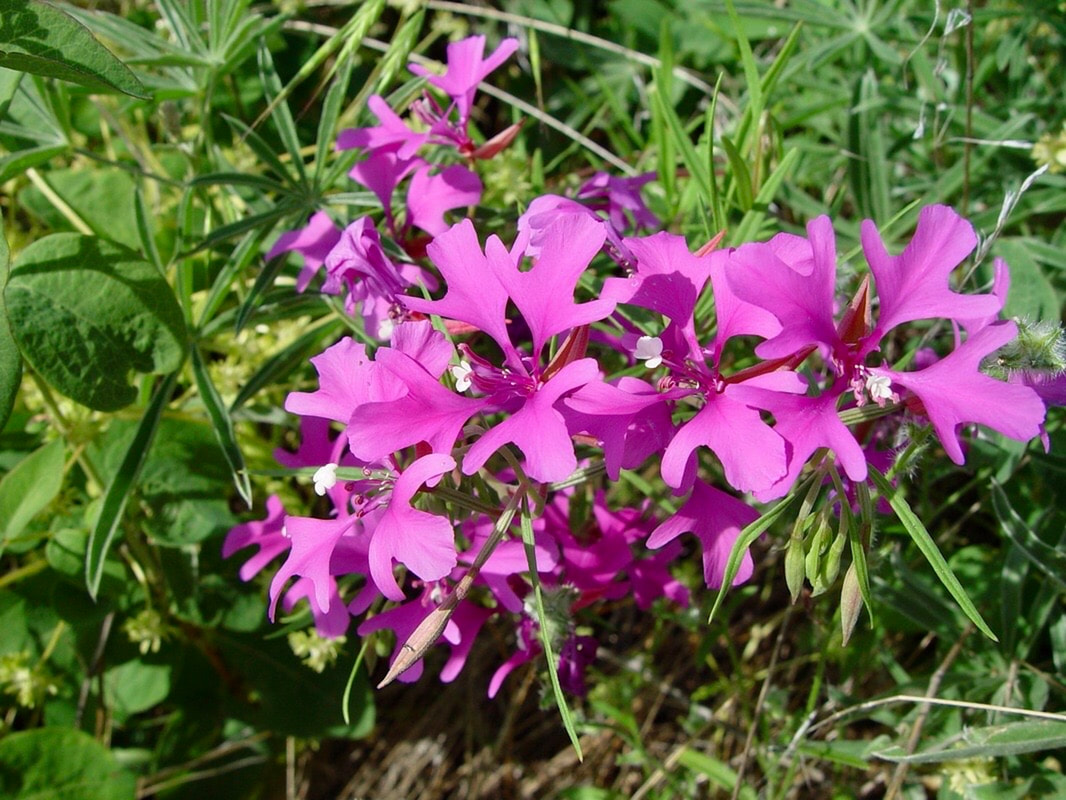LARGE-FLOWER CLARKIA. AKA PINKFAIRIES
GENESIS NAME: Clarkia pulchella
DISTRIBUTION: WA, OR, ID, MT Canada..BC
SEASON: June thru Roctober
MEDICAL USE: NONE
POISONOUS: NO
EDIBILITY:NO
FEATURES: An herbaceous perennial plant, it is the type species of Clarkia. This plant is 10–50 cm (3.9–19.7 in), erect, branched or not, and covered with short hairs. The leaves alternate along the stalk and are lance to spoon-shaped, about 2–7 cm (0.79–2.76 in) long and sometimes finely toothed. The distinctive lavender to light purple flowers are four-lobed and fused at the base. Each lobe is in turn three-lobed with the middle lobe widest.
LEAVES:
FRUITS:
DISTRIBUTION: WA, OR, ID, MT Canada..BC
SEASON: June thru Roctober
MEDICAL USE: NONE
POISONOUS: NO
EDIBILITY:NO
FEATURES: An herbaceous perennial plant, it is the type species of Clarkia. This plant is 10–50 cm (3.9–19.7 in), erect, branched or not, and covered with short hairs. The leaves alternate along the stalk and are lance to spoon-shaped, about 2–7 cm (0.79–2.76 in) long and sometimes finely toothed. The distinctive lavender to light purple flowers are four-lobed and fused at the base. Each lobe is in turn three-lobed with the middle lobe widest.
LEAVES:
FRUITS:
DESCRIPTION:
General Description
Stems erect, 10–50 cm. Herbage puberulent. Leaves alternate, linear, obscurely petiolate, 1–6 cm long. Flowers slightly irregular, pedicelate, magenta (white); hyapnthium 1–5 mm long; sepals 6–15 mm long, often joined at the tips; petals 1–3 cm long, deeply 3-lobed with a pair of small lateral lobes on the claw; stamens 8, only 4 fertile; stigma lobes 1–3 mm long. Capsule linear, vaguely 4-angled, 1–2 cm long.
The Clarkia plants themselves are not considered edible or medicinal, even though they're also non-toxic and safe around kids and pets.
Stems erect, 10–50 cm. Herbage puberulent. Leaves alternate, linear, obscurely petiolate, 1–6 cm long. Flowers slightly irregular, pedicelate, magenta (white); hyapnthium 1–5 mm long; sepals 6–15 mm long, often joined at the tips; petals 1–3 cm long, deeply 3-lobed with a pair of small lateral lobes on the claw; stamens 8, only 4 fertile; stigma lobes 1–3 mm long. Capsule linear, vaguely 4-angled, 1–2 cm long.
The Clarkia plants themselves are not considered edible or medicinal, even though they're also non-toxic and safe around kids and pets.



